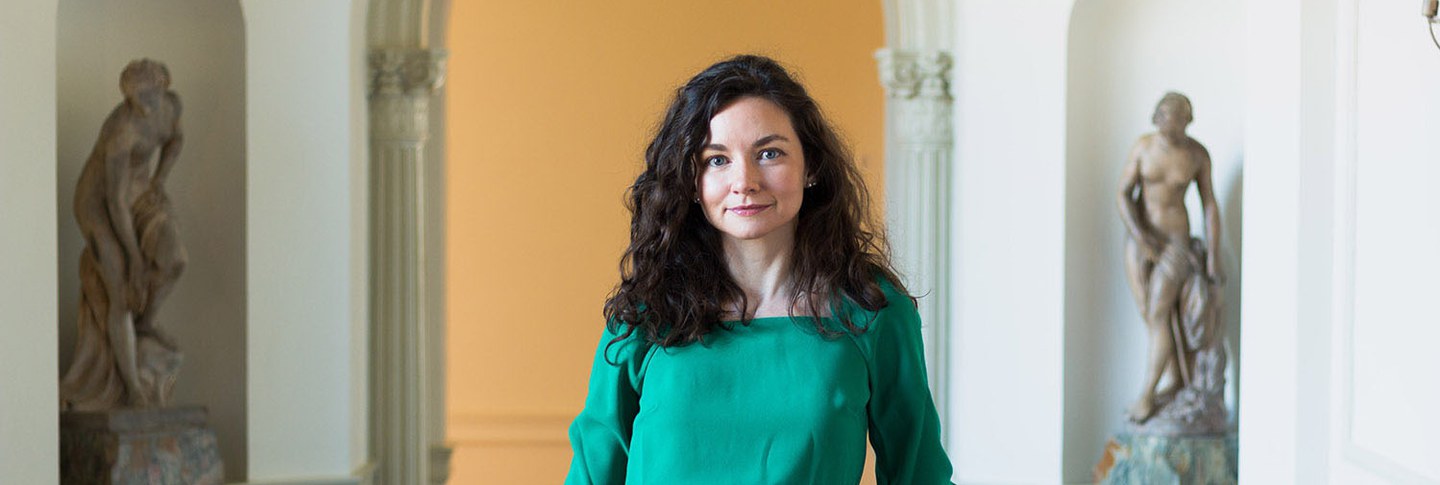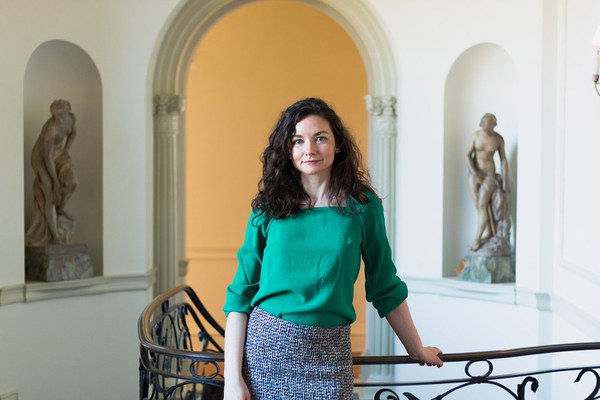Erin Galgay Walsh, assistant professor of New Testament and early Chistianity at the University of Chicago Divinity School, was a recent junior fellow in Byzantine Studies. Her research report, “Sanctifying Boldness: New Testament Women in the Liturgical Poetry of Narsai, Jacob of Serugh, and Romanos Melodos,” shows how poetry fashions ethical exempla from biblical women and disrupts traditional understandings of early Christian views on women.
Q&A with Erin Galgay Walsh
Who are the bold women you research?
I look at some of the unnamed women of the New Testament. Mary has been a focus of research in early Christianity, understandably, but depictions of Mary are often idealized. I examine other female figures from the New Testament, such as the woman with a hemorrhage and the Canaanite woman. These women offer different angles because they are ailing, sexually promiscuous, and marginalized due to their gender, ethnic identities, and bodily dispositions. In Syriac poetry these women are imagined as assertive and given voluminous imagined speech—they are even praised for their “boldness.” This praise of bold actions and speech nuances our understanding of how early Christian writers scripted ideal female behavior.
One biblical story retold by Syriac and Greek poets is the account of a woman who struggled with uncontrolled bleeding. While the Gospels of Matthew, Luke, and Mark differ in detail, they all speak of a woman desperate for healing who pursues Jesus. Convinced that contact with Jesus would heal her, the woman reaches out for the hem of Jesus’s garment in secret. The dramatic point in the story is when Jesus asks, “who touched me?” and praises the woman’s extraordinary faith. We find visual depictions of this story in early Christian art, and popular preachers composed sermons explaining the spiritual significance of her story.
In my own research I examine how two early Byzantine poets—Romanos, a Greek poet of Syrian origin, and the Syriac-speaking Jacob of Serugh—spoke about this woman’s illness. Syriac literature represents the third largest body of early Christian texts, only surpassed by Greek and Latin. As a dialect of Aramaic, Syriac originated in the environs of Edessa, modern-day Urfa in southeastern Turkey. As early as the 2nd century, Christianity took root in northern Syria and Mesopotamia, and the Syriac language was spoken and written throughout the region, eventually extending as far as India and Central Asia. Poetry was a favored genre among Syriac authors, and female biblical figures feature prominently. In recent decades, historians of Christianity have enriched our understanding of the development and spread of Christianity using Syriac sources.
One of the remarkable aspects of this poetry is the attribution of speech to biblical women beyond the accounts we find in the biblical text itself. In homilies or other iconography, these women were usually depicted as being humble and praised for their faithful receptivity. Poetry expanded the biblical stories and actually imagined a woman speaking for herself about her own body, which is rare in Christian literature. The poets I examine craft their characters (such as the ailing woman), emphasizing their inner deliberations and spiritual struggles. I study how these poems give voice to pain and offer insights into suffering and the gendered body.
Who might have encountered these poems about bold women?
Christians of all backgrounds—both men and women—would have heard these poems when they gathered for vigils. While some types of Syriac poems were performed by female choirs, the poetry I examine was often performed by a male cantor. For Romanos, there are refrains the whole congregation would have sung, allowing everyone to inhabit the voice of the biblical woman. It’s interesting to think about how women in the audience would have heard these emotional portraits. How did these works shape their understanding of virtuous “femininity” and faith? These poetic women were held up as ideal Christian selves for both men and women. How does that give nuance to or enrich our ideas about early Christian women?
How does purity come into the story?
One aspect of this poetry that caught my attention was the emphasis Romanos and Jacob placed on the theme of purity. In the Hebrew Bible and the Greco-Roman world, we encounter diverse messages about sources of bodily impurity. For women, the question of purity is especially acute around inescapable processes like menstruation or childbirth. Many accounts of purity in early Christianity focus on official documents: letters of clerics and church orders (documents that talk about women in the church, where they can stand, when they can be in the sanctuary). But I wanted to think about the poetry Christians were listening to. Romanos, for instance, melds language about the woman’s impure bodily state with reflection on the impurity of sin and moral “stain.” How did these depictions shape early Christian notions about the relative (im)purity of the female body? Poetry featuring women who are seen as impure but are also praised for their boldness hasn’t really been looked at yet as a resource for thinking about women’s bodies being problematic in holy spaces.
Julia Ostmann is postgraduate writing and reporting fellow at Dumbarton Oaks. Photo by Elizabeth Muñoz Huber, postgraduate digital media fellow.

